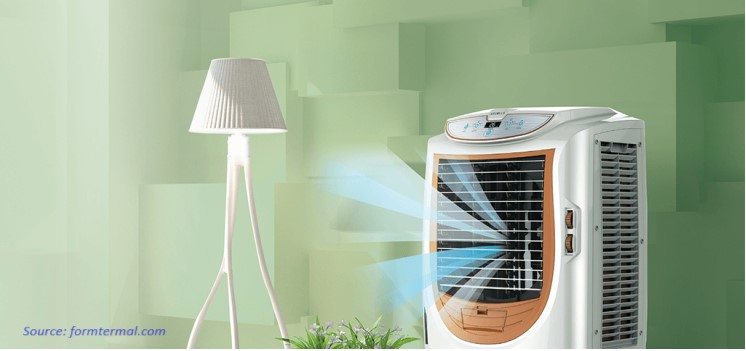
China Heat Exchangers Market by Type (Shell & Tube, Plate & Frame, Air Cooled, and Others), by Material (Metals, Alloys, and Brazing-CLAD), and by End User (Chemical, Energy & Power, Heating, Ventilation, Air Conditioning, and Refrigeration (HVACR), Food & Beverage, Pulp & Paper, and Others)– Opportunity Analysis and Industry Forecast, 2024–2030
Industry: Retail and Consumer | Publish Date: 22-Mar-2024 | No of Pages: 118 | No. of Tables: 86 | No. of Figures: 51 | Format: PDF | Report Code : N/A
Market Overview
The China Heat Exchangers Market size was valued at USD 4243.5 million in 2023, and is predicted to reach USD 6872.1 million by 2030, with a CAGR of 6.5% from 2024 to 2030.
Heat exchangers represent devices designed to transfer heat from one fluid to another without direct fluid contact, widely utilized across industrial, commercial, and residential sectors, including HVAC systems and refrigeration units, for efficient fluid or air heating or cooling. Functioning by permitting heat passage through a barrier, such as a solid wall or a series of plates or tubes, they fulfill various tasks such as heating water in boilers or cooling air in air conditioning systems. Available in diverse designs tailored to specific requirements, ranging from simple radiator coils to complex systems present in chemical processing plants and power generation facilities, they hold indispensable roles across multiple industries and applications.
These roles encompass regulating air temperature in buildings, facilitating steam production in power plants, controlling temperatures during chemical reactions, and assisting in food processing, among other functions. Furthermore, they serve as crucial components in automotive cooling systems and boast widespread utilization in aerospace, marine, and wastewater treatment industries, playing pivotal roles in efficient thermal management and energy transfer.
Focus on Sustainable Practices Drives China’s Heat Exchangers Market
The focus on sustainable practices is driving growth in the China heat exchangers market. With increasing awareness of environmental sustainability, there's a growing demand for energy-efficient solutions across industries. Heat exchangers play a crucial role in sustainable practices by facilitating heat recovery, reducing energy consumption, and minimizing environmental impact.
As China prioritizes sustainable development and implements stricter environmental regulations, industries are investing in heat exchangers technologies to improve efficiency and reduce emissions. Additionally, government initiatives and incentives promoting sustainable practices further boost market growth by encouraging the adoption of heat exchangers in various applications such as HVAC systems, industrial processes, and renewable energy projects.
Increasing Demand for HVAC Systems Boosts the Growth of the Market
The increasing demand for HVAC systems is driving growth in China's heat exchangers market. As urbanization and infrastructure development accelerate across the country, there's a rising need for heating, ventilation, and air conditioning (HVAC) systems in residential, commercial, and industrial buildings. Heat exchangers are integral components of HVAC systems, facilitating efficient heat transfer and temperature control.
With China's focus on improving indoor comfort, energy efficiency, and air quality, the demand for HVAC systems equipped with high-performance heat exchangers is on the rise. This trend is further fueled by government initiatives promoting energy conservation and green building standards, driving investments in energy-efficient HVAC solutions, and propelling the growth of the heat exchangers market in China.
Competition from Alternative Technologies Restrains China’s Heat Exchangers Market
Competition from alternative technologies presents a challenge to China's heat exchangers market. While heat exchangers offer efficient heat transfer solutions, alternative technologies such as heat pumps, thermal storage systems, and direct cooling methods are gaining traction. These alternatives often boast advantages such as lower energy consumption, smaller footprint, and simplified installation.
Additionally, advancements in materials science and manufacturing techniques enable the development of innovative heat transfer solutions that may outperform traditional heat exchangers in certain applications. To remain competitive, heat exchangers manufacturers in China must focus on innovation, cost reduction, and customization to meet evolving customer needs and differentiate their products in the market.
Advancements in Cutting-Edge Materials and the Rising Trend of Industry 4.0 Create a Market Opportunity
The integration of advanced materials such as graphene and advanced ceramics signifies a significant leap in heat exchangers technology. These materials exhibit exceptional properties, including high thermal conductivity and corrosion resistance, offering substantial potential for enhancing efficiency, durability, and overall performance across diverse industries such as HVACR, automotive, aerospace, and renewable energy.
By harnessing these unique attributes, heat exchangers can enable more effective heat transfer and better withstand challenging operational conditions, thereby enhancing reliability and prolonging lifespan. Moreover, the adoption of advanced materials can decrease energy consumption and extend service life by approximately 5 to 10 years, resulting in significant benefits in terms of operational efficiency and sustainability across various sectors.
Additionally, the emergence of Industry 4.0, characterized by the integration of automation, data exchange, and digital technologies in manufacturing processes, offers further opportunities for advancing heat exchangers technology. Through enhanced monitoring, control, and optimization facilitated by Industry 4.0 technologies, heat exchangers can attain heightened efficiency and productivity.
Consequently, the synergy between advanced materials and Industry 4.0 advancements is poised to propel innovation and growth in the heat exchangers market, promising enhanced performance and sustainability across a wide array of industrial applications.
Competitive Landscape
Several market players operating in China’s heat exchangers market include Alfa Laval AB, Johnson Controls International plc, Carrier Global Corporation, Lennox International Inc., Trane Technologies plc, API Heat Transfer Inc., Kelvion Holding GmbH, Xylem Inc., Danfoss Group, and General Electric Company among others. These companies are adopting various strategies such as product launches to remain dominant in the heat exchangers market.
Key Market Segments
By Type
-
Shell & Tube
-
Fixed Tube Heat Exchangers
-
U-Tube Heat Exchangers
-
Floating Head Heat Exchangers
-
Other Shell & Tube Heat Exchangers
-
-
Plate & Frame Heat Exchangers
-
Gasketed Plate & Frame Heat Exchangers
-
Welded Plate & Frame Heat Exchangers
-
Brazed Plate & Frame Heat Exchangers
-
Other Plate & Frame Heat Exchangers
-
-
Air Cooled
-
Forced Draft Heat Exchangers
-
Induced Draft Heat Exchangers
-
-
Others
By Materials
-
Metals
-
Alloys
-
Brazing-CLAD
By End User
-
Chemical
-
Energy & Power
-
HVACR
-
Food & Beverage
-
Pulp & Paper
-
Others
REPORT SCOPE AND SEGMENTATION:
|
Parameters |
Details |
|
Market Size in 2023 |
USD 4243.5 Million |
|
Revenue Forecast in 2030 |
USD 6872.1 Million |
|
Growth Rate |
CAGR of 6.5% from 2024 to 2030 |
|
Analysis Period |
2023–2030 |
|
Base Year Considered |
2023 |
|
Forecast Period |
2024–2030 |
|
Market Size Estimation |
Million (USD) |
|
Growth Factors |
|
|
Companies Profiled |
10 |
|
Market Share |
Available for 10 companies |
|
Customization Scope |
Free customization (equivalent up to 80 working hours of analysts) after purchase. Addition or alteration to country, regional, and segment scope. |
|
Pricing and Purchase Options |
Avail customized purchase options to meet your exact research needs. |
KEY PLAYERS
-
Alfa Laval AB
-
Johnson Controls International plc
-
Carrier Global Corporation
-
Lennox International Inc.
-
Trane Technologies plc
-
API Heat Transfer Inc.
-
Kelvion Holding GmbH
-
Xylem Inc.
-
Danfoss Group
-
General Electric Company




 Speak to Our Analyst
Speak to Our Analyst


































